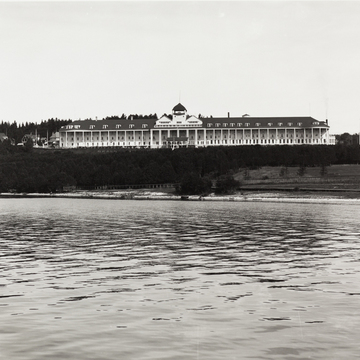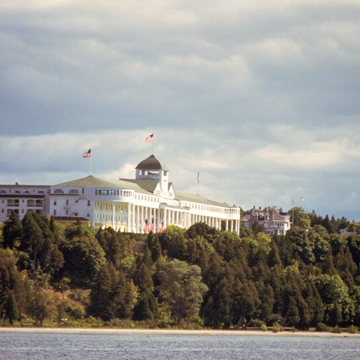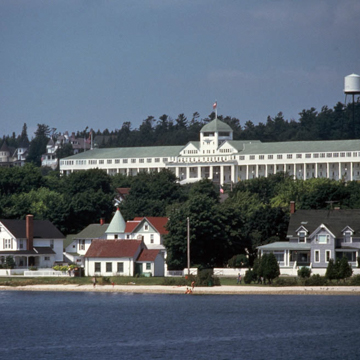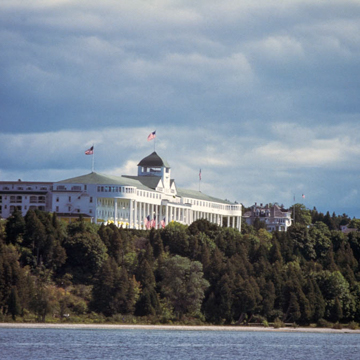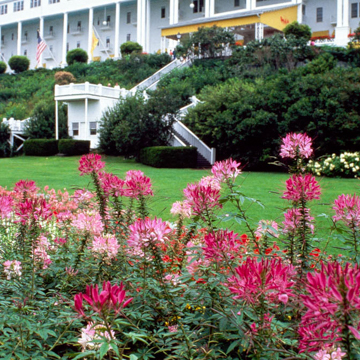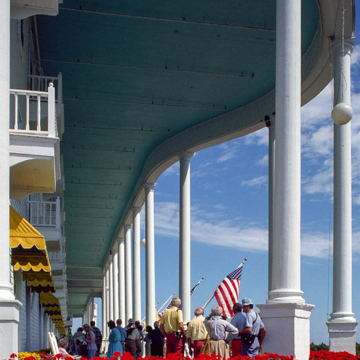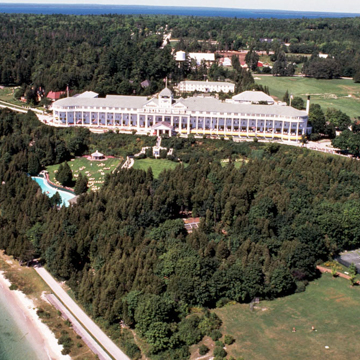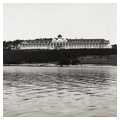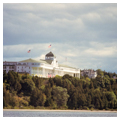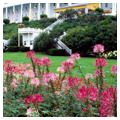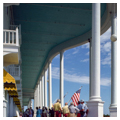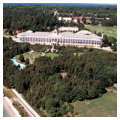Grand Hotel exceeds all superlatives ever written to describe its stately majesty and festive quality. Sited high atop the West Bluff overlooking the Straits of Mackinac and silhouetted against the green woods and blue skies of summer, the grand white hotel is visible for miles from the water and from the Mackinac Bridge. The hotel's classical columned facade is one of the most enduring images of Mackinac Island. The Grand is one of the few large wooden resort hotels of the late nineteenth century that still stand. Constructed of Michigan white pine, it features a three-story veranda that extends the full length of the hotel. Guests of the hotel line the veranda to enjoy beautiful scenic views of Round Island Lighthouse, ships passing through the Straits, and sparkling blue waters. Additions and enlargements have expanded the hotel to twice its original size.
The slender colossal columns that line the veranda easily and gracefully support a fourth level. The veranda is rounded at each corner and relieves the otherwise harsh straight lines of the rectangular hotel. Seven colossal coupled columns support a slightly projecting central entrance and emphasize the symmetry of the facade. And, as if to repeat the symmetry of the whole, twin low-lying dormers with multiple windows enframe a central open belvedere.
In 1882 U.S. senator Francis B. Stockbridge of Michigan purchased the site of the hotel and formulated a scheme to finance its construction. He created interest in the building and the oversight of the hotel's operation among the three major transportation companies that served the island and that wanted to promote the use of their transportation systems. Thus, the Detroit and Cleveland Navigation Company, the Michigan Central Railroad, and the Grand Rapids and Indiana Railroad formed the Mackinac Island Hotel Company. To build the hotel, the stock company commissioned Caskey, an architect-builder, who had come to Harbor Springs from Allegan to take part in the building rush of the 1880s in the resort communities of northwestern Lower Michigan. Caskey executed plans prepared by Mason of Mason and Rice in Detroit. The stock company leased the operation of the Grand Hotel to managers and firms experienced in operating hotels in New England and elsewhere. Among the wealthy midwesterners assembled at the Grand Hotel for its opening in 1887 were lumber barons Alger, Newberry, and Blodgett; the Potter Palmers and Marshall Fields; and meat packers Armour and Swift.
Today, the Grand Hotel is probably Michigan's major architectural attraction.


